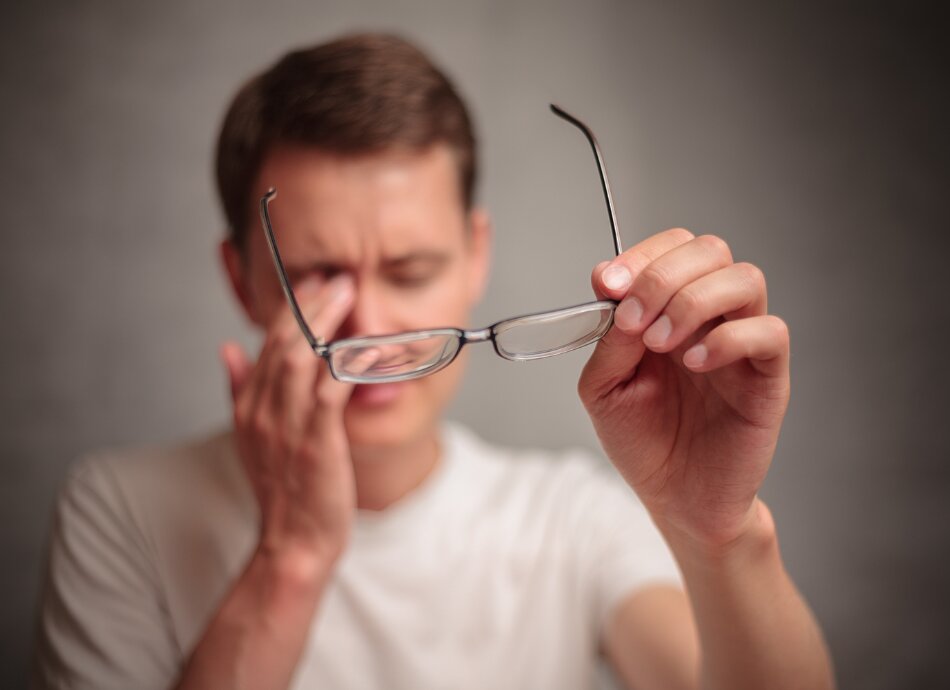Meibomian cyst
Also known as a chalazion. Sounds like kuh-ley-zee-uhn
Key points about meibomian cysts
- Meibomian cysts are lumps in your eyelids caused by blocked oil glands in the lids. These lumps often occur in groups.
- They're not due to infection and usually resolve over time, though this may take some months.
- Heat and massage can be helpful in clearing them, though it may take some weeks to show improvement.
- Surgical drainage of the cysts can be performed (usually only considered for adults). However, the procedure doesn't prevent more cysts from forming in the future. This destroys the oil gland and can cause dry eye to get worse.

The meibomian glands in the lids (see diagram below) are responsible for maintaining a strong tear film by providing a protective oil layer to stop your eyes drying out. If the glands aren’t working properly, the lid margin is typically red, the eyes get irritated and dry (gritty, burny), there is watering, vision can be variable (due to butter-like grease in the tears rather than smooth thin oil) and occasionally they will block completely and form a cyst.

Image credit: 123rf
Meibomian cysts are small (2 to 8 mm) and filled with fluid. They're more common on the upper eyelid and are more likely to affect adults than children.
Are they the same as a stye?
It can be hard to tell the difference between a meibomian cyst and a stye. However, while they are both due to blocked oil glands, a stye is a bacterial infection. Styes tend to occur at the very edge of your eyelid and can be very painful. Meibomian cysts (chalazia) tend to be further up (or down) from the edge of your eyelid and might be a bit tender but are not usually sore.
The image below shows a meibomian cyst on an upper eyelid.

Image credit: Depositphotos
There are usually 30 to 40 glands per lid, and this explains why meibomian cysts (chalazia) are common and often come in groups. They’re not due to infection. The redness and swelling are due to your body attempting to unblock the glands by increasing the blood supply (causing inflammation). As they rarely become infected, antibiotic ointments and drops make very little difference.
All meibomian cysts will resolve with time and as they’re just a blocked gland they’re cosmetic only and won’t affect your vision.
The best management is time, although treatment using heat and massage to the cysts can speed up the process, by increasing the inflammatory response. Realistically this can take months, but a lot of shrinkage occurs in the first few weeks making them less obvious.
Surgical drainage
The quick solution is incision and curettage (a simple surgical drainage): but in children this requires a general anaesthetic and is almost never justified due to the risks of the anaesthetic. Adults have the choice of a local anaesthetic injection, so incision and curettage for cosmetic reasons is more often performed in adults.
However, the cyst can reform, and others can develop, so for a cyst that will resolve by itself (even if this takes 6 to 9 months) the usefulness of incision and curettage is limited. If you can feel it, but not really see it much, then there’s no need to have a meibomian cyst drained. If you’re on the public health system waiting list for surgical drainage, the cysts may well have gone away by the time you get your surgery. The best treatment is to leave them alone or perform heating (to melt the oil) followed by firm lid massage.
Warm compress and massage
- Warm compress: Put a clean flannel or cloth into hot water (not boiling) and hold it against the eyelid for 5 to 10 minutes, 3 to 4 times a day. The warmth and slight pressure help the oil in the cyst to soften and drain more easily.
- Massage: Wash your hands well and gently massage the area with your finger or a cotton bud to encourage the cyst to drain.
Don’t use makeup while you have a cyst. If your meibomian cyst doesn’t go away in a few weeks, see your optometrist or healthcare provider.
Cleaning your eyelids morning and night to remove any grease and dead skin cells may help prevent cysts from forming. Using clean warm water is usually sufficient. Sometimes if there is significant amounts of scaly skin and redness, a product from the pharmacy such as Sterilid or Systane Lid Wipes may be helpful.
If you get meibomian cysts regularly, applying heat and doing gentle massage each day may stop them happening again.
If you wear contact lenses make sure you wash your hands well before handling them and clean and replace them as instructed.
Don’t use old or expired makeup and don’t share other people’s makeup.
For further information about meibomian cysts, or any vision or eye health concerns, contact your optometrist or ophthalmologist for individual assessment.
References
- Chalazion(external link) Patient Info, UK, 2023
- Chalazion(external link) Cleveland Clinic, US, 2024
Credits: Healthify editorial team. Healthify is brought to you by Health Navigator Charitable Trust.
Reviewed by: Kenny Wu, Optometrist, Eye Institute, Auckland
Last reviewed:





